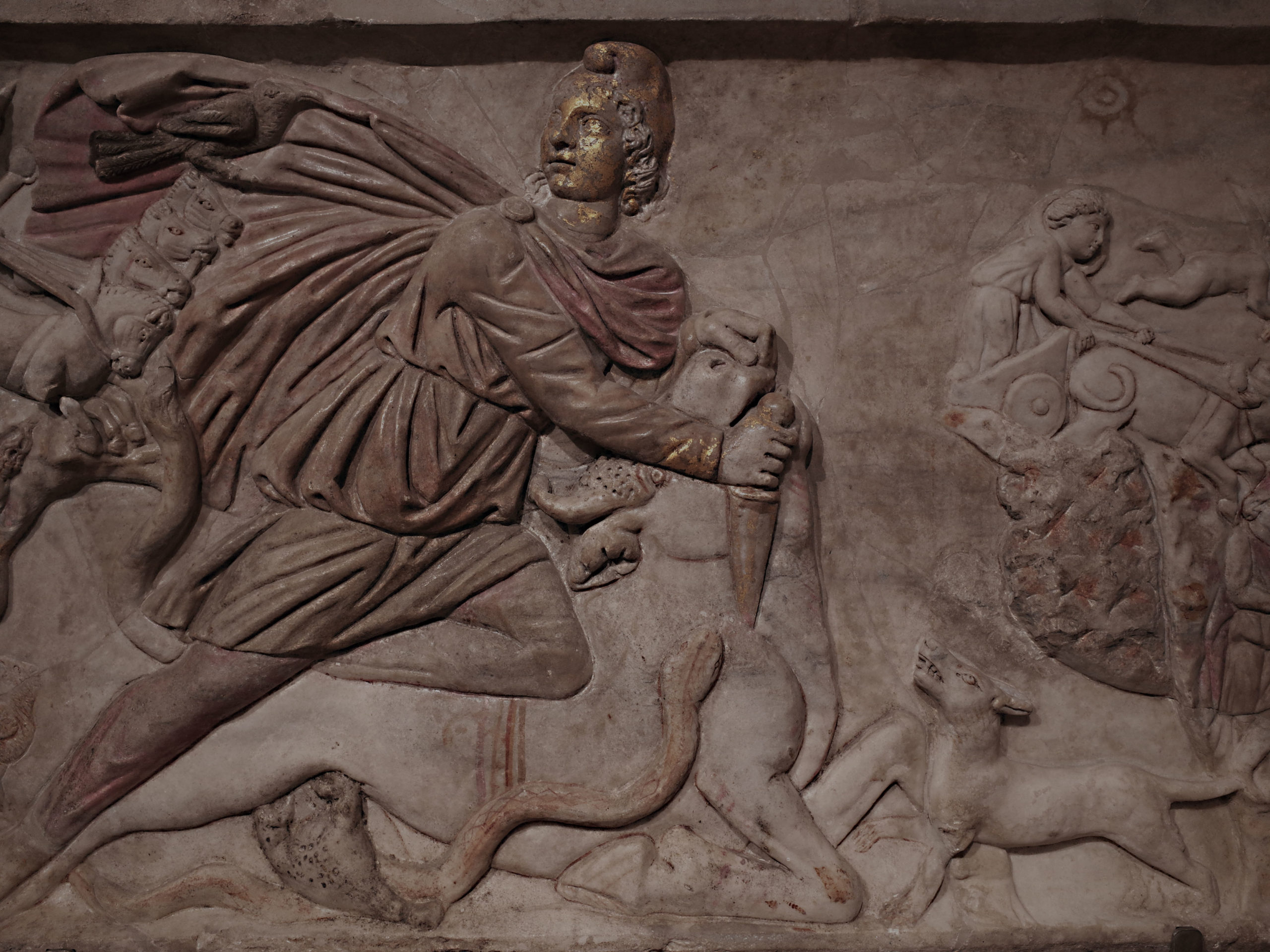Watch the online seminar hosted by Darius Arya here:
In the religious customs of ancient Rome, sacrifice and ritual held a significant position, acting as a means to establish a connection with the deities. These ceremonial practices were executed meticulously and with a strong adherence to traditional norms. The Romans partook in various forms of sacrifices, each serving a distinct purpose. The most prevalent type was the “piacular” sacrifice, intended to seek divine forgiveness for committed transgressions, whether deliberate or unintentional. These rituals involved offering food, animals, and sometimes even human beings. Another commonly observed type was the “votive” sacrifice, conducted to fulfill specific vows or requests made to the gods. These acts of devotion were believed to elicit the gods’ aid in achieving personal or communal objectives.
The actual sacrificial proceedings occurred in designated sacred spaces, such as altars or temples. The presence of pontiffs, who served as priests, was imperative to oversee and conduct the rituals. Participants, whether individuals or state officials, gathered around the altar, displaying their piety and dedication. Prayers, often following prescribed formats, were recited to beseech the gods’ favor and attention. Subsequently, the sacrificial animal was swiftly and precisely slaughtered, ensuring a quick and merciful demise. This act of killing the animal was regarded as sacred, symbolizing the transfer of life to the gods. The blood from the sacrificed animal was collected and utilized for various purposes, including sprinkling on the altar or participants as a purifying agent.
After the sacrificial act, the animal was prepared for consumption. Portions of the animal, typically the thighs or entrails, were set aside as offerings to the gods. These portions were commonly burnt on the altar, signifying their transformation into spiritual tributes. The remaining meat was distributed among the participants, fostering a sense of communal unity and shared participation in the sacred feast.
The significance of these offerings extended beyond the physical act of sacrifice itself. The Romans believed that the gods consumed the spiritual essence of the offerings, thus establishing a bond between mortals and the divine realm. This act of communion played a central role in upholding cosmic order and seeking divine favor.
In conclusion, sacrifice and ritual were not limited to the realm of spirituality; they also had profound social implications. Public sacrifices served as occasions for communal gatherings, fostering a sense of unity and shared identity among Roman citizens. They provided public officials with opportunities to showcase their piety and demonstrate their devotion to the welfare of the state. Moreover, private sacrifices and rituals were viewed as a means to reinforce familial bonds and establish social hierarchies. These practices were indicative of social status and often intertwined with broader aspects of Roman culture.
Sources
- Beard, M., North, J., & Price, S. (Eds.). (1998). “Religions of Rome: Volume 1, A History.” Cambridge University Press.
- Beard, M., North, J., & Price, S. (Eds.). (1998). “Religions of Rome: Volume 2, A Sourcebook.” Cambridge University Press.
- Scheid, J. (2003). “An Introduction to Roman Religion.” Indiana University Press.
- Versnel, H. S. (Ed.). (1993). “Faustus and the Roman Sacrificial Rituals: A Study in Social Anthropology.” Brill.
- Turcan, R. (1999). “The Gods of Ancient Rome: Religion in Everyday Life from Archaic to Imperial Times.” Routledge.
- Price, S. R. (2007). “Rituals and Power: The Roman Imperial Cult in Asia Minor.” Cambridge University Press.
- Ando, C. (2000). “Imperial Ideology and Provincial Loyalty in the Roman Empire.” University of California Press.
- Beard, M., & North, J. (Eds.). (1990). “Pagan Priests: Religion and Power in the Ancient World.” Cornell University Press.
- Rüpke, J. (Ed.). (2007). “A Companion to Roman Religion.” Wiley-Blackwell.
- Scheid, J. (2015). “The Gods, the State, and the Individual: Reflections on Civic Religion in Rome.” University of Pennsylvania Press.
This content is brought to you by The American Institute for Roman Culture, a 501(C)3 US Non-Profit Organization.
Please support our mission to aid learning and understanding of ancient Rome through free-to-access content by donating today.
Cite This Page
Cite this page as: Darius Arya, The American Institute for Roman Culture, “Seminar – Sacrifice & Ritual in Ancient Rome” Ancient Rome Live. Last modified 04/28/2020. https://ancientromelive.org/seminar-sacrifice-ritual-in-ancient-rome/
License
Created by The American Institute of Roman Culture, published on 04/28/2020 under the following license: Creative Commons: Attribution-NonCommercial-ShareAlike. This license lets others remix, tweak, and build upon this content non-commercially, as long as they credit the author and license their new creations under the identical terms. Please note that content linked from this page may have different licensing terms.



